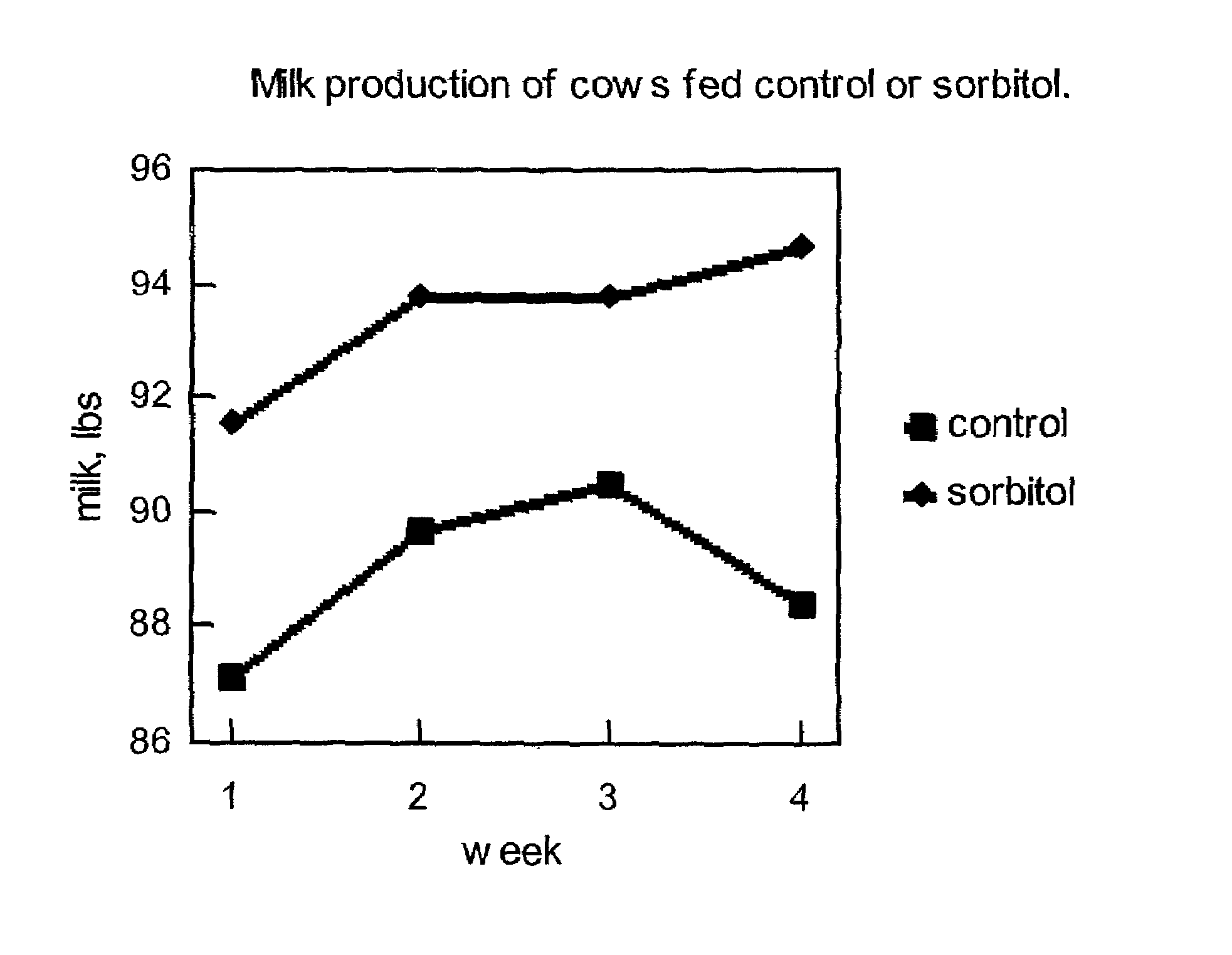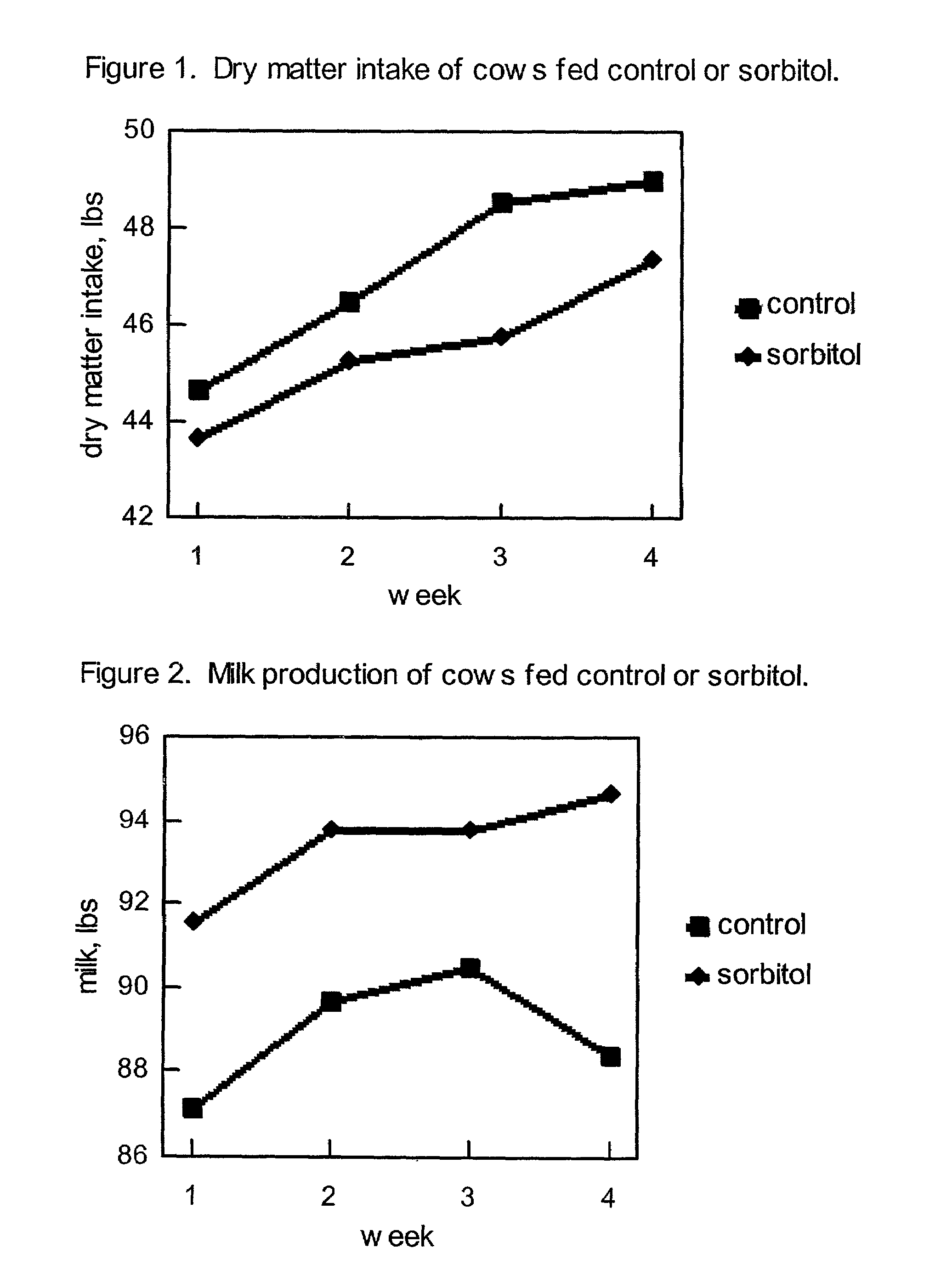Method for enhancing milk production
a technology of enhancing and enhancing milk production, applied in the field of enhancing milk production, can solve the problems that the technology of reducing the amount of milk produced by ruminants is not adequately addressed, and achieves the effect of enhancing the amount of milk produced
- Summary
- Abstract
- Description
- Claims
- Application Information
AI Technical Summary
Benefits of technology
Problems solved by technology
Method used
Image
Examples
example 1
[0027]This example demonstrates the effect of orally feeding lactating cows sorbitol at the rate of about 100 grams of sorbitol per day per cow. In this example, twenty Holstein cows averaging about thirty days in milk each, and thus in early lactation, were arranged in a randomized complete block design. Ten of the twenty cows were orally fed a control ration, and the other ten cows were orally fed a test ration that consisted of the control ration plus about 100 grams of sorbitol per day per cow.
[0028]The cows were blocked by parity milk production, based upon the level of milk production by individual cows, after being in milk for fifteen to twenty days. After being blocked by parity milk production, the cows were randomly allotted to the control ration feeding or to the test ration feeding. The components of the control ration used in this example are shown in Table 1:
[0029]
TABLE 1COMPONENTSWEIGHT PERCENT (DRY BASIS)alfalfa haylage13.0alfalfa hay13.0corn silage26.0corn, cracked1...
example 2
[0043]This example demonstrates the differential effect of orally feeding lactating cows a control ration, a first test ration formed of the control ration and sorbitol that was orally fed to the cattle at the rate of about 50 grams of sorbitol per day per cow, and a second test ration formed of the control ration and sorbitol that was orally fed to the cattle at the rate of about 100 grams of sorbitol per day per cow. In this example, fifteen Holstein cows (nine multiparous and six primiparous) averaging about sixty-five days in milk each, and thus in early lactation, were arranged in a 3×3 Latin square design, also known as the switch back design, that was replicated five times. Each cow was randomly allotted to the control ration treatment, to the first test ration treatment, or to the second test ration treatment.
[0044]In the 3×3 Latin square design, each cow is cycled through each treatment, namely, the control ration treatment, the first test ration treatment, and the second t...
PUM
| Property | Measurement | Unit |
|---|---|---|
| temperature | aaaaa | aaaaa |
| weight | aaaaa | aaaaa |
| total weight | aaaaa | aaaaa |
Abstract
Description
Claims
Application Information
 Login to View More
Login to View More - R&D
- Intellectual Property
- Life Sciences
- Materials
- Tech Scout
- Unparalleled Data Quality
- Higher Quality Content
- 60% Fewer Hallucinations
Browse by: Latest US Patents, China's latest patents, Technical Efficacy Thesaurus, Application Domain, Technology Topic, Popular Technical Reports.
© 2025 PatSnap. All rights reserved.Legal|Privacy policy|Modern Slavery Act Transparency Statement|Sitemap|About US| Contact US: help@patsnap.com


